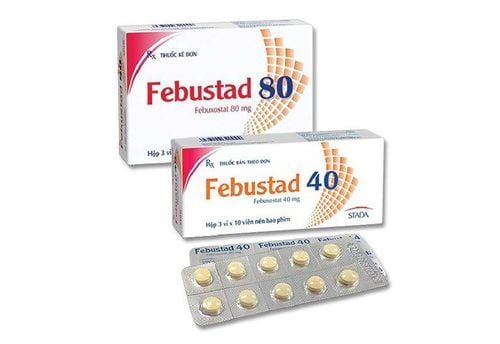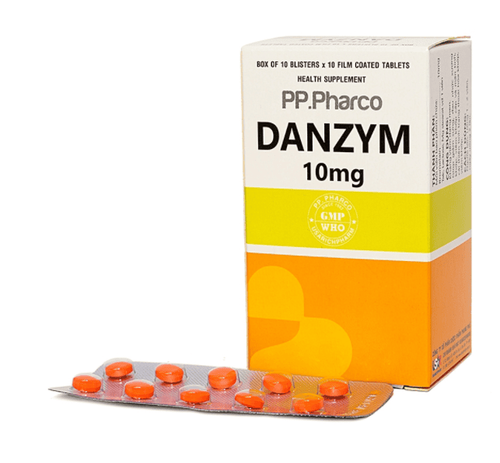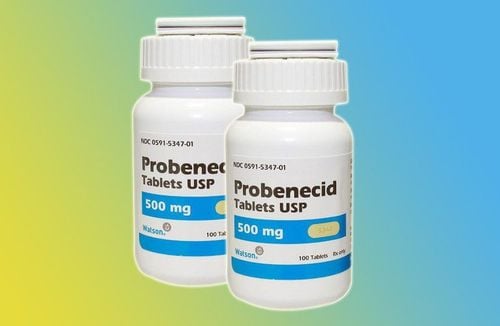This is an automatically translated article.
Posted by Doctor CKII Hoang Thi Hien - Department of Examination - Vinmec Times City International Hospital
The gold standard for diagnosis of gout is finding urate crystals in joint fluid or tophi. Treatment of gout is based on two main strategies: controlling inflammation caused by gout, reducing pain and lowering blood uric acid, and avoiding the formation of new urate crystals that cause acute gout.
1. An overview of gout
Gout is a metabolic disorder that causes the deposition of monosodium urate crystals in the tissues. Clinical manifestations are increased uric acid in the blood, causing pain in joints, cartilage, bones, under the skin, and kidneys. The prevalence of gout in Vietnam according to a community survey in 2003 was 0.14%, today, this number is increasing due to alcohol abuse and high protein diets. In Australia, gout is also a common problem, it is associated with many serious comorbidities such as hypertension, chronic kidney disease, obesity, diabetes and cardiovascular disease. Recent changes include how older drugs are used, as well as newer therapies available or under development.
The gold standard for diagnosis of gout is finding urate crystals in joint fluid or tophi. Treatment of gout is based on two main strategies: controlling inflammation caused by gout, reducing pain and lowering blood uric acid, and avoiding the formation of new urate crystals that cause acute gout.
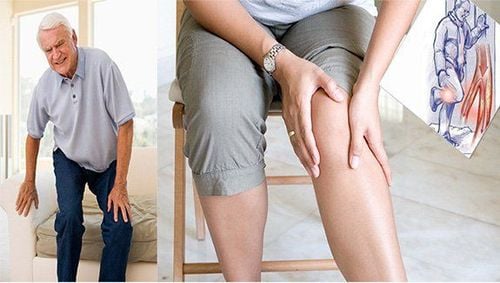
2. Risk factors for gout
Some of the main factors that increase the risk of gout are:Family and racial factors: Recent studies show that there are many genes in the body that are involved in controlling and maintaining uric acid blood levels. blood (AU), these genes may be located on the autosomal or X-chromosomal chromosome. Age and sex factors: Hyperaemia and gout are more common in men over the age of 30. The disease is often combined. with a number of other metabolic disorders such as dyslipidemia, obesity, diabetes mellitus, hypertension. Drinking a lot of alcohol: Increases the catabolism of ATP into AMP, which increases blood lactic acid, which reduces AU excretion by the kidneys, increases AU production, in addition, alcohol is also a rich source of exogenous purines, increasing blood AU. Kidney disease: Many diseases of the urinary system are the cause of increased blood AU and gout such as: Kidney failure, kidney stones, urinary tract stones, polycystic kidney. Renal diseases that cause hyperaemia are due to decreased AU clearance, decreased AU secretion, and increased AU reabsorption in the distal tubule. Drugs used in treatment: Diuretics: Framingham studied that 50% of gout patients were related to thiazide diuretics; Salicylate drugs: small doses of less than 2g/24 hours inhibit renal tubular urate secretion, high doses >3g/24 hours inhibit reabsorption. Anti-tuberculosis drugs: Pyrazinamide, ethambutol, nicotinic acid reduce renal clearance of AU. Cyclosporin, Levodopa, corticosteroids and some contrast agents also affect the renal clearance of AU, causing an increase in blood AU.

3. Gout and dangerous complications
People with gout will often suffer from pain in the joints, especially in joints such as toe joints, finger joints, knee joints or ankles... Especially when the weather changes , sudden change from hot to cold, the pain becomes more intense, more painful at night, causing the patient to lose sleep, severe body weakness, always appear tired...
Beyond In addition, prolonged gout will turn chronic and cause complications such as:
3.1 The appearance of tophi particles around the joints This is a manifestation and also a complication of chronic gout. These particles can be more or less, large or small, affecting the patient's aesthetics, lack of confidence when communicating, and also reduce mobility and mobility of the joints.
3.2 Leads to hard-to-heal tophi, the longer the disease is left, the more these tophi particles will be detected and broken, creating conditions for bacteria to attack the joints, causing a very dangerous joint infection.
3.3 Causing complications in the kidneys, typically causing kidney stones The kidneys are responsible for excreting uric acid from the body through urine. However, for people with gout, the amount of uric acid is too large, the kidneys can't filter it, which easily causes stagnation in the kidneys, which will form kidney stones for a long time. Urate stones of the kidney are non-contrast stones, so they can only be detected through ultrasound of the urinary system.
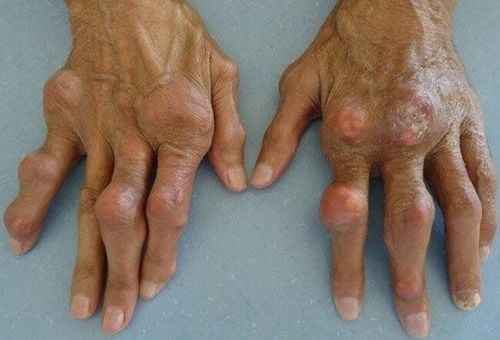
3.4 Leads to chronic kidney failure Once kidney failure will greatly affect health, toxins in the body will not be eliminated, leading to many other diseases, especially at this time the use of anti-inflammatory drugs. inflammation is no longer effective.
3.5 Causes superficial phlebitis of the lower extremities This condition is common in patients with associated metabolic syndrome, such as hyperglycemia, hypertension, dyslipidemia...
3.6 Difficulty for the treatment of disease For those who let the disease last too long, the treatment also becomes more difficult and complicated. During the treatment process, it is easy to encounter complications because the patient has previously used anti-inflammatory drugs to relieve pain, easily lead to peptic ulcer, coronary artery disease, kidney failure, and also increase the risk blood-borne infections are life-threatening.
4. What to do to deal with gout and its complications?
Prophylaxis of acute gout is recommended in people starting uric acid-lowering therapy. Initiation of urate-lowering therapy for acute gout is common and prophylactic treatment is aimed at preventing recurrent exacerbations. The recommended duration of prophylaxis is now longer than what was previously used. The American College of Rheumatology recommends: At least 6 months, or 3 months after the goal serum urate acid is achieved in patients without tophi, or 6 months after the goal serum urate acid is achieved in patients infected with tophi on examination.
Treatment of gout patients with targeted serum urate lowering is essential to reduce recurrent acute gout attacks and resolve tophi. For those without tophi, a serum urate acid goal <0.36 mmol/L should be used; For those with tophi, a serum urate acid goal < 0.30 mmol/L (EULAR 2016) should be considered.
Patient education: Research has suggested that patients with gout who lack confidence in their treatments have reduced adherence to medication. The lack of confidence in treatment may have stemmed from their gout flare-up after starting urate-lowering therapy. Education about this and other aspects of gout is important to make sure patients understand that although their disease may flare up for a short time, they are working toward the overall goal of not having gout. gout attacks for a long time. In addition, it may be important to equip gout patients with the skills and motivation to adhere to medication.
Large amounts of sugar or carbonated soft drinks, such as cola or lemonade, are a recognized risk for gout. Patients with gout should limit their intake of these beverages.
Epidemiological evidence also suggests that a diet high in purines increases the risk of gout, but there is scant evidence that a low-purine diet in people with gout reduces gout attacks or uric acid levels. bars of clinical significance.
Vinmec International General Hospital with a system of modern facilities, medical equipment and a team of experts and doctors with many years of experience in medical examination and treatment, patients can rest assured to visit. Gout examination and treatment at the Hospital.
Please dial HOTLINE for more information or register for an appointment HERE. Download MyVinmec app to make appointments faster and to manage your bookings easily.
References:
Lawrence M. Ryan, MD (2015). Gout.Professor of Medicine, Medical College of Wisconsin. The management of gout: Much has changed). Philip C Robinson; Lisa K Stamp;Volume 45, No.5, May 2016 Pages 299-302





